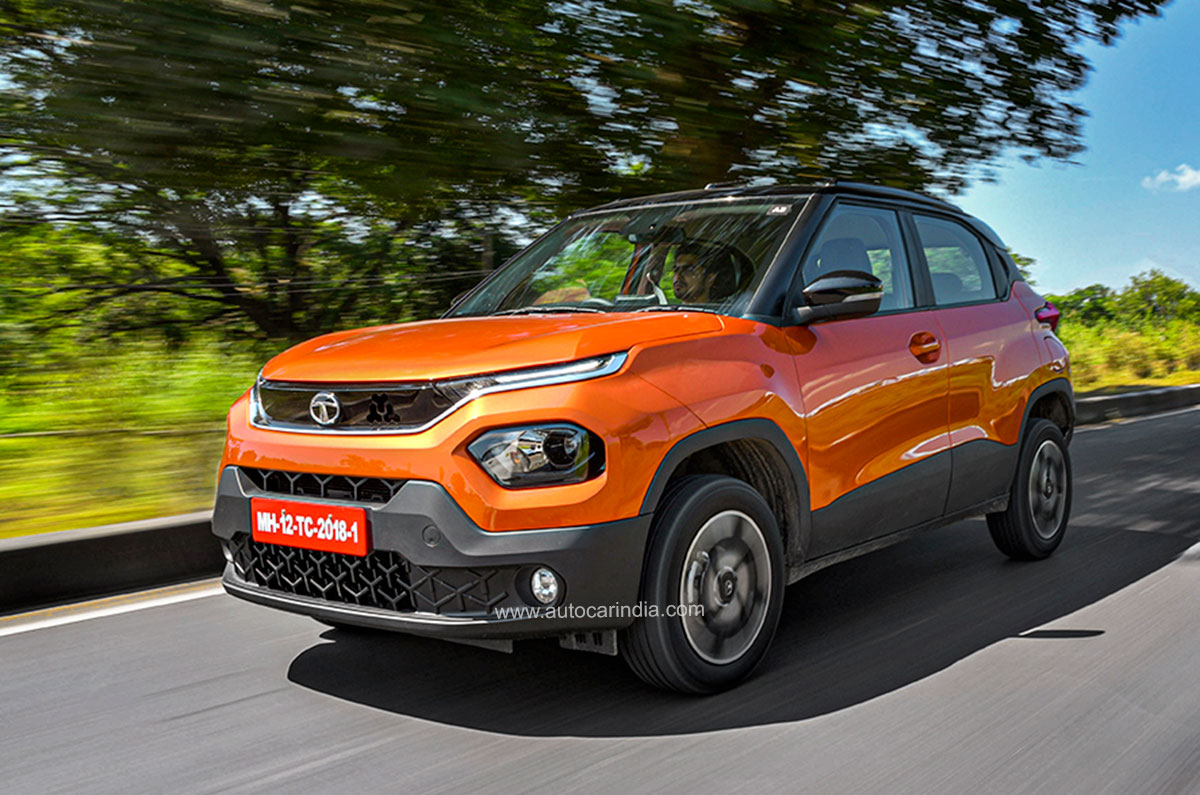
Buyers aspiring to own an SUV on a hatchback budget are exactly those that Tata is targeting with its all-new ‘sub-compact SUV’ christened Punch. The company is going to lengths to drive home the point that the Punch’s SUV classification isn’t a misnomer. Even though it is a front-wheel-drive-only model, it has been designed to take on the worst of Indian roads, as well as mild off-road trails.

Size-wise, it sits between the Tiago NRG cross-hatchback and the Nexon compact SUV, and with a sole non-turbo-petrol engine offering, paired with manual and automated manual transmission (AMT) options, Tata even delivers on its aggressive price promise with a mouth-watering Rs 5.49 lakh for the base variant. Prices of other variants of this sub-compact SUV overlap with larger, turbo and non-turbo-petrol compact SUVs like Nissan Magnite and Renault Kiger, and even with some variants of the Tata Nexon. So, does the Punch really punch above its weight? We put it through our exhaustive tests to find out.
Designed on a clean sheet of paper, the Punch has been conceived to be an SUV from the ground up. The flat concave bonnet (raised on the sides) and its split-headlamp layout, with the LED Daytime Running Lamps atop and projector headlamp cluster below, establish strong family ties with the larger Tata Harrier and Safari. Uniquely, the gloss black grille is an enclosed panel with a tri-arrow-shaped opening for the horn behind. The lower half of the front bumper is black plastic, and it features a large air-dam (split by the number plate) that sports tri-arrow design elements, which has now become a signature styling trait on modern Tatas.
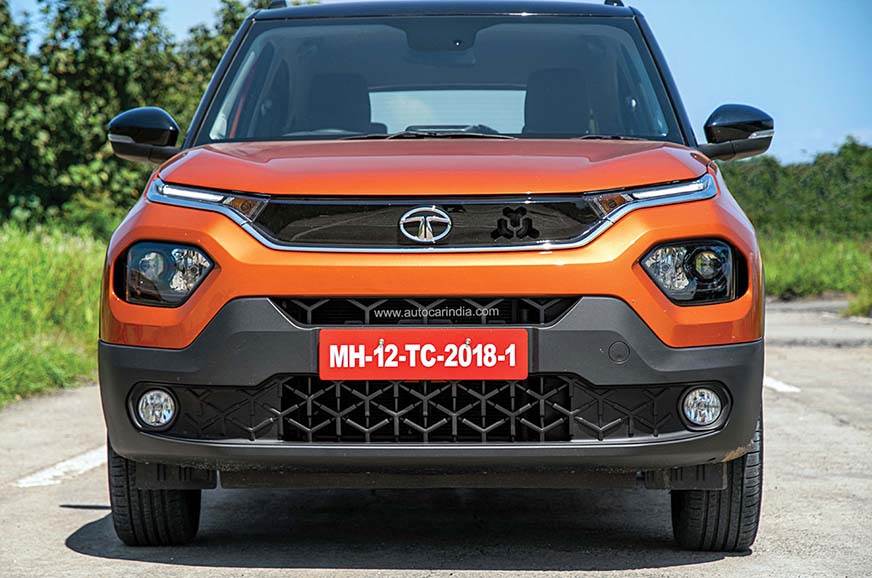
The Punch has a purposeful stance; and while the smart 16-inch diamond-cut alloys are attractive, they don’t quite fill out the massive squared-out wheel wells. Its thick side cladding, black pillars and roof break the monotone, and like the Altroz, the Punch’s rear door handles are tucked in the C-pillar. Some might find the Tata’s rear design a bit tame in comparison to the aggressive front, but the cool-looking circular tail-lamps with ‘Y-shaped’ tri-arrow LED elements really do help the Punch stand out. Like other Tatas, the Punch also sports some fun Easter eggs for you to discover, like the one-horn rhinoceros motif in the rear windscreen (and glovebox), as well as Tata lettering in the elongated tail-lamp bezel.
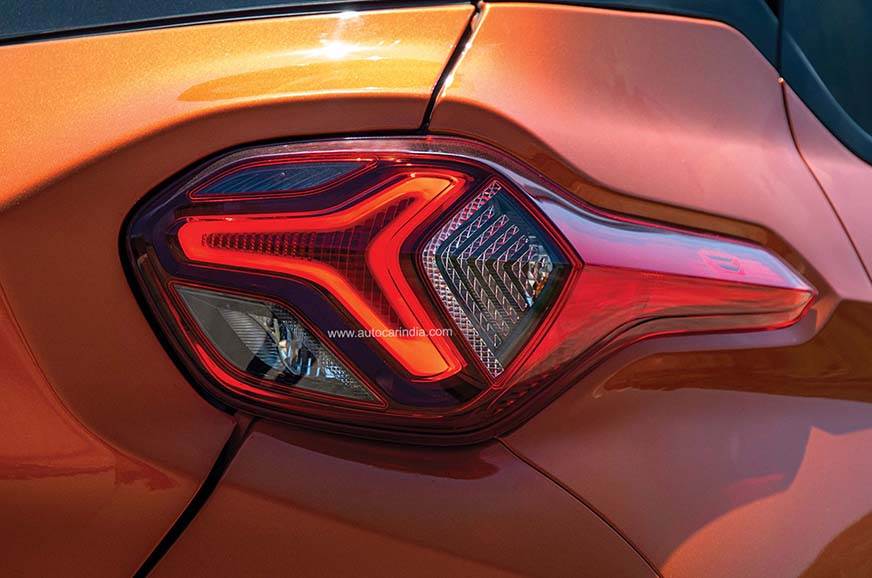
View it in light of other compact SUVs and the Punch is much smaller in dimension. Measuring 3,827mm in length, 1,742mm in width and with a wheelbase of 2,445mm, it is shorter and narrower than the Nissan Magnite and Renault Kiger. However, its 1,615mm height makes it taller than its closest rivals, and its high roof and upright pillars certainly help with that SUV-like look Tata’s seriousness to establish the Punch as a capable SUV is evident in its marketing speak, which highlights its 190mm (unladen) ground clearance, 370mm water-wading capacity and a host of off-roading angles.

The Punch is built on Tata’s new ALFA architecture and like its platform sibling, the Altroz, it has secured an impeccable 5-star rating in crash tests conducted by Global NCAP. What’s also interesting is that Tata has introduced it with a petrol engine to begin with, with an all-electric derivative also likely to see the light of day in the future.
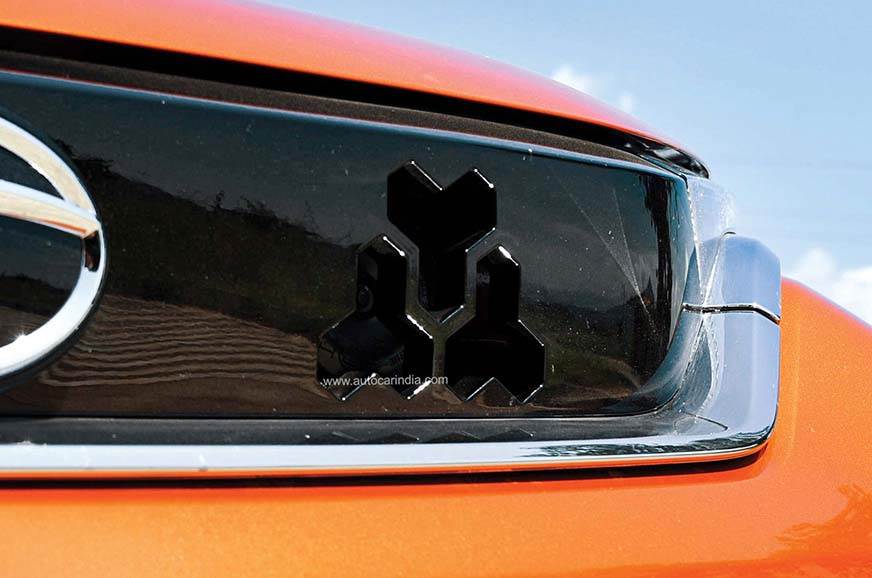
The fresh and youthful exteriors are complemented by an equally stylish and exuberant interior. To start with, ingress and egress are a breeze, even for the elderly, thanks to its doors that open up to 90 degrees (like the Altroz) and its overall high seating. The layered dashboard design is pleasing to look at, and so are its rectangular air vents. Contrasting white panels, textured plastics and other materials not only look appealing, but also feel quite upmarket. The free-standing touchscreen, climate control buttons, steering, as well as the part-digital instrument cluster, are shared with the Altroz premium hatchback. Having the premium knitted roof liner, like the Tiago hatchback’s, would have added to the Punch cabin’s sense of occasion.

The front seats are nice to be in, however, the cushioning is a bit firm and tall drivers will find thigh support to be limited. What’s nice is that these seats are high-set to begin with, and can be jacked up further to suit your requirements. Its low window line and XL-size door mirrors further enhance side and rear visibility, and the reversing camera with adaptive guidelines makes life easier while parking in tight spots.

Despite its compact size, rear seat space is comparable to the pricier Kia Sonet, in terms of knee and shoulder room. Two six-footers can sit one behind the other with some room to spare, and what adds to comfort is the space beneath the front seats to tuck your feet into. Rear headroom is in adequate supply for all but the tallest of occupants, and what’s nice is that the Punch also gets adjustable rear head restraints and a centre armrest. A flat floor does add to the comfort of an occasional third passenger here, but the car’s narrow width makes seating three abreast here a tight squeeze. There’s no rear air-con vent either. It’s important to bring in that a Nexon is roomier with more leg, head and shoulder room, should cabin space dictate your choice of Tata SUV to buy.
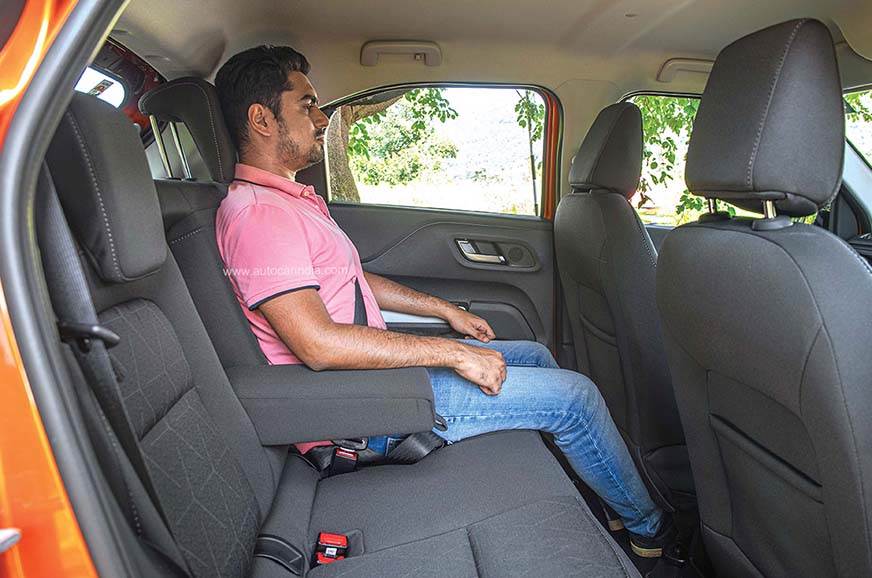
Storage areas for smaller items like cupholders are in abundant supply, the segmented glovebox is massive and all the doors can easily swallow large bottles and then some. There’s just one USB charging provision and two 12V power sockets for front occupants. Rear passengers, on the other hand, get two front seatback pockets as well as a storage area with cupholders between the front seats. At 319 litres (366 litres, if measured till the roof), the Punch’s boot is almost the size of a Maruti Brezza’s boot, and owners also get the flexibility to fold down the rear seat to accommodate more cargo.
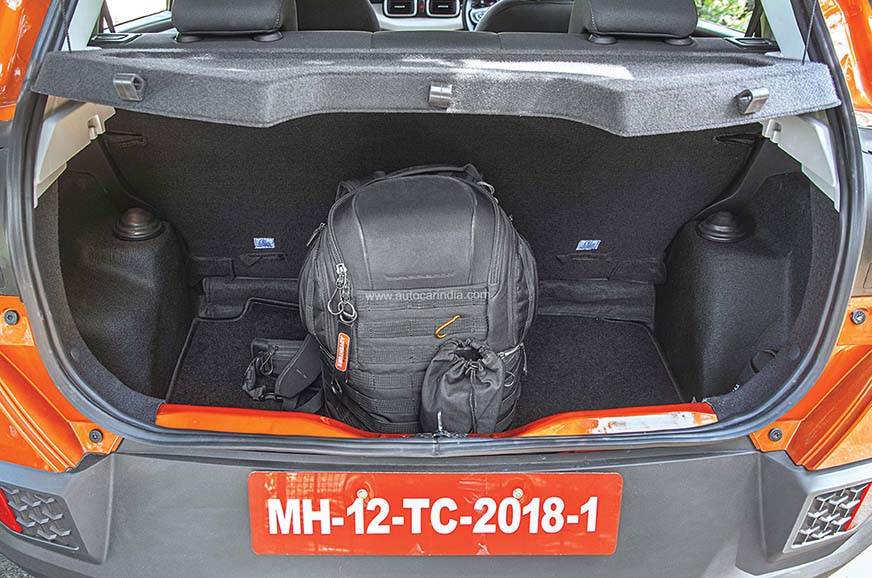
It packs in a 7.0-inch touchscreen with Android Auto, Apple CarPlay, a crisp six-speaker Harman audio system, as well as (optional) connected car features. Other equipment that the top-spec Punch packs in are automatic projector headlamps with LED DRLs, rain-sensing wipers, cruise control, electric folding mirrors, climate control, cooled glovebox, rear wiper and washer, 16-inch alloys, fog lamps with cornering function and a security alarm, to name a few.
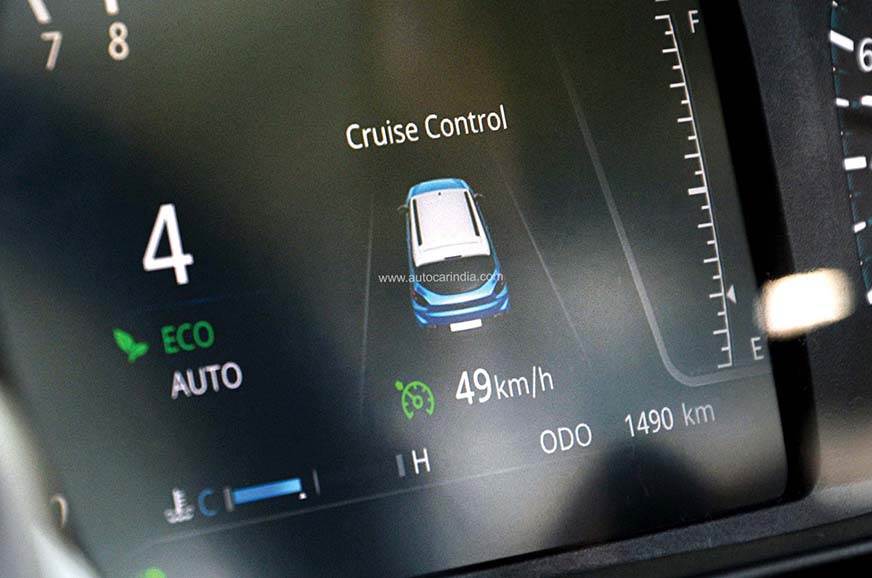
The Tata Punch uses the same 1.2-litre, three-cylinder, naturally aspirated petrol engine as the Tiago, Tigor and Altroz. With the transition to BS6, this motor gets a reworked air intake system and a new air filter to enhance efficiency and improve drivability; its software and calibration have also been tweaked for linear performance. The good news is that these modifications have resulted in a smoother power delivery and it certainly feels nicer than its older iterations.

While it is smoother than before, the 1.2-litre Revotron unit still isn’t as refined or vibe-free as Maruti’s K-series engines. The engine sounds grainy and there is some three-cylinder thrum too, but to be fair, it only gets really vocal over 4,000rpm where you’ll also hear a whine from the engine bay.
The engine makes a modest 86hp and 113Nm of torque, but factor in the Punch’s 1,035kg kerb weight, and the output comes across as more than reasonable. What’s nice is that the engine performs its daily duties with relative ease and its clever gearing makes it quite user-friendly, especially in the city. Adopt a sedate driving style and it’ll even perform satisfactorily on the occasional highway jaunt. But demand a brisk performance and the engine feels out of its comfort zone. Quick overtaking manoeuvres will warrant careful planning, and you will need to spin this engine hard and work its gearbox to make progress. And while on that topic, the TA65 5-speed manual transmission is quite effort-free in its operation, but shifts aren’t butter-smooth like in the other cars it competes with. Thankfully, its clutch is light and easy to operate.
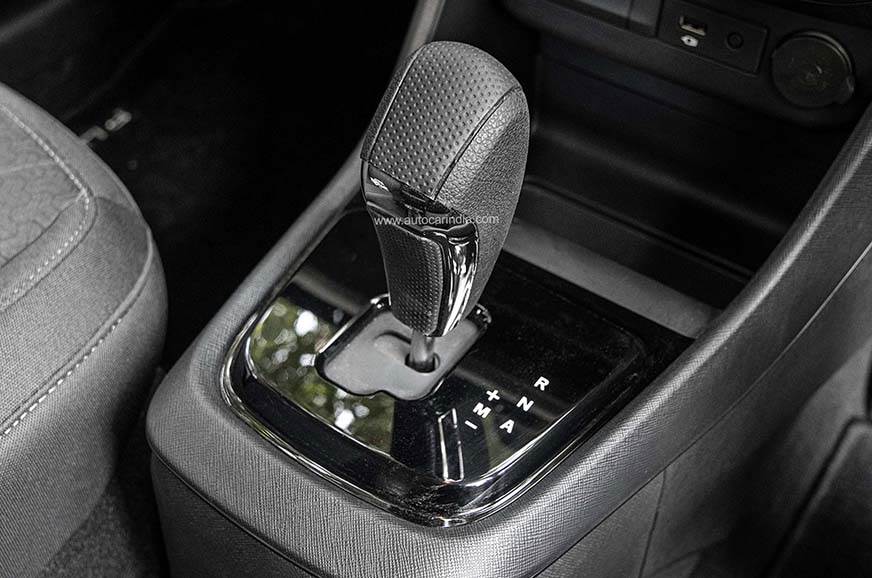
Even though flat-out performance isn’t going to be a deciding factor for buyers, the Punch accelerates from 0-100kph in 16.14sec in City mode, and rolls from 20-80kph in third gear and 40-100kph in fourth gear in a lazy 15.58sec and 22.46sec, respectively. There’s an Eco mode on offer which blunts performance even further. Part-throttle responses are lazier than in City mode, and in our acceleration tests, not only is it nearly 1.5sec and 2.0sec slower in third (20-80kph) and fourth (40-100kph) gear, respectively, it sprints from 0-100kph in a lethargic 19.28sec. Thus, this mode is best suited on a mission to extract maximum fuel efficiency.
Only the manual iteration is equipped with an engine start-stop feature that switches off the motor when the car comes to a halt, in order to save fuel while idling. This system has been included for the company to meet its CO2 and fuel-efficiency targets. An insider at Tata explains that the AMT achieves these targets owing to its inherent ability to operate in higher efficiency zones.
Speaking of which, the Marelli-sourced 5-speed automated manual transmission (AMT) is a familiar unit that first made its debut in the Tiago hatchback. Within metres of driving this AMT, it feels more refined compared to some older-gen units. The creep function is a bit eager but is easy to get accustomed to and is particularly useful in stop-go traffic. The gearbox performs with relative smoothness as AMTs go, and shift shocks or pauses between gearshifts are well contained. First-time auto gearshift users and newbie drivers will certainly appreciate its ease and convenience. There isn’t a hill-hold feature on offer, so it is advisable to use the handbrake before starting off on an uphill climb to prevent it from rolling back.
This AMT has a tendency to upshift to the highest gear at the earliest (in the interest of fuel economy) and coupled with this non-turbo engine’s unhurried performance, it encourages drivers to adapt a laid-back driving style. Erratic throttle responses will confuse this gearbox, resulting in annoying pauses while the transmission decides whether to shift to a lower gear or continue in the same gear. Another peculiarity is that while gradually slowing down from fourth gear, it occasionally continues rolling at the same speed and feels like the car is ‘running away’, thus compelling you to depress the brake pedal even harder to control its deceleration.
Owners may take manual control over the gearbox via the tiptronic mode, useful while driving downhill for more engine braking; however, even in this mode, the gearbox upshifts automatically.
Like the manual, there are two drive modes – City and Eco. The AMT sprints from 0-100kph in City mode in 19.98sec, which is around 3.0sec quicker than in Eco mode. Rolling acceleration times from 20-80kph and 40-100kph reveal similar results, with City mode being quicker than Eco mode by 2.5sec and 2.8sec, respectively.

Unique to the Punch’s AMT version is a Traction Pro mode, which detects front wheel slippage and asks for permission to activate via a notification on the touchscreen. Once permission is granted, the driver needs to press the brake and accelerator pedal at the same time, and the system will intelligently apply the brake to the wheel with low or no traction, while the one with traction easily pulls the car out of the sticky situation.
Having conducted our tests in Eco mode, the Tata Punch threw up a pleasant surprise, with the AMT being more fuel efficient than the manual transmission, returning 10.7kpl in the city and 16.9kpl on the highway, 0.4kpl and 0.8kpl higher than the manual. Helping the AMT’s case is its early upshifting nature in the city and its reluctance to downshift on the highway, in the interest of efficiency. The manual’s engine start-stop feature helps its case to a certain extent in the city.

Tata has nailed the Punch’s ride and handling balance. There’s an underlying toughness to its suspension, which shines while tackling rough and bad sections of road. It flattens road imperfections with a sense of maturity like a much heavier car, and its stability at high speeds is excellent. The steering of the Punch is light, consistent and accurate, and not overtly sharp like the Altroz’s unit. Its taut structure, light kerb weight and wonderful steering feel make it quite enjoyable around corners. And while driving enthusiasts will be left longing for stronger engine performance, a majority of owners will be satisfied with its overall packaging. Its brakes feel natural and progressive, and its braking performance is very confidence-inspiring.
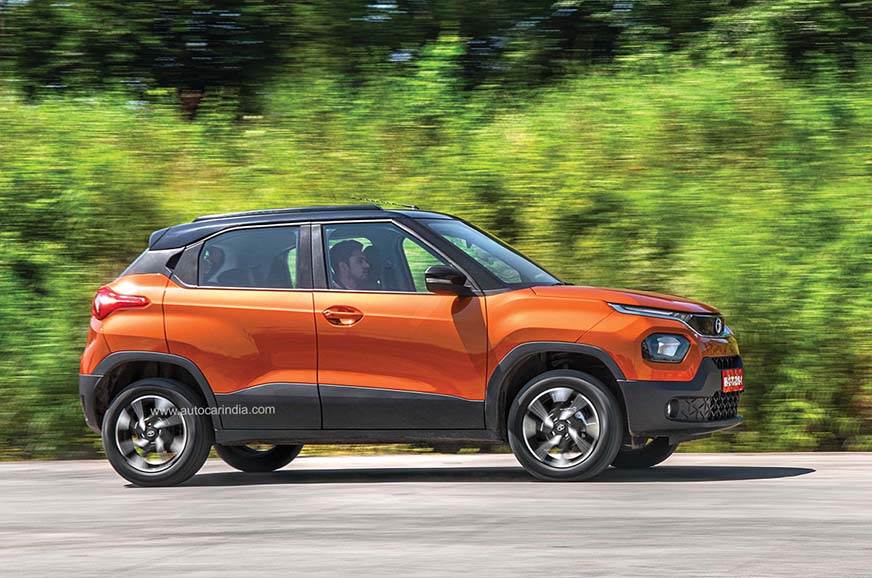
Make no mistake though, while the Punch is certainly more capable than other hatchbacks at this price due to the Traction Pro feature (AMT), its raised ride height and tall stature, it is still a front-wheel-drive car and, hence, it must not be subjected to conditions meant for four-wheel-drive vehicles.
Sharing its 7.0-inch touchscreen with other models, the screen looks small and touch responses are a bit slow. Even the plethora of icons and small font on the home screen make it appear a bit cluttered. Tata has done away with physical shortcut buttons.

It packs in Android Auto and Apple CarPlay, as well as a host of optional connected car features offering some remote functions, security alerts, location-based services and some vehicle diagnosis via a mobile application. Its six-speaker Harman sound system elevates the sound experience, and is one of the nicer set-ups around in this price range.
A hatchback with SUV pretensions isn’t unusual, but the Tata Punch packs in some of the attributes you’d associate with the SUV body style. It’s got the elevated seating and ample ground clearance, and more importantly, it boasts of a tough build. Adding to its SUV credentials is the AMT’s Traction Pro feature that allows it to tackle some hostile conditions with relative ease. What’s more is that it drives like a more mature, premium car. In other areas, too, the Tata has a lot going for it – it is stylish on the outside, cheerful on the inside, packs in adequate space and practicality, as well as a reasonable equipment list. Having been awarded five stars in Global NCAP crash tests also speaks highly of its build and safety.
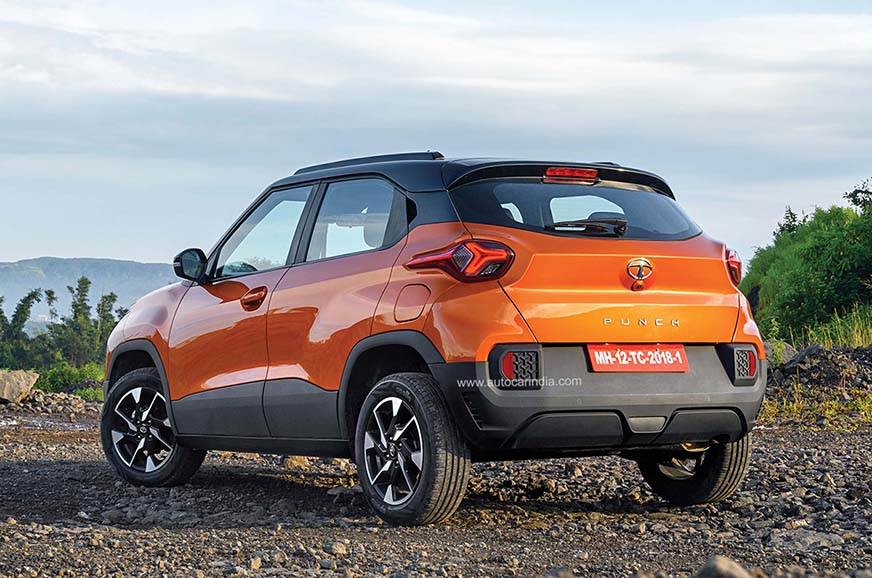
Its engine performance is satisfactory at best, and its AMT gearbox could have been more intuitive, but its light controls, good visibility and decent city performance are likely to appease most buyers. What could be a deal-breaker, however, is its ambitious pricing, which overlaps with larger, better-equipped turbo-petrol compact SUVs, placing it in the price territory of more competent cars. On the whole, there's no doubt that it's a competent car, but it comes across as a bit pricey.
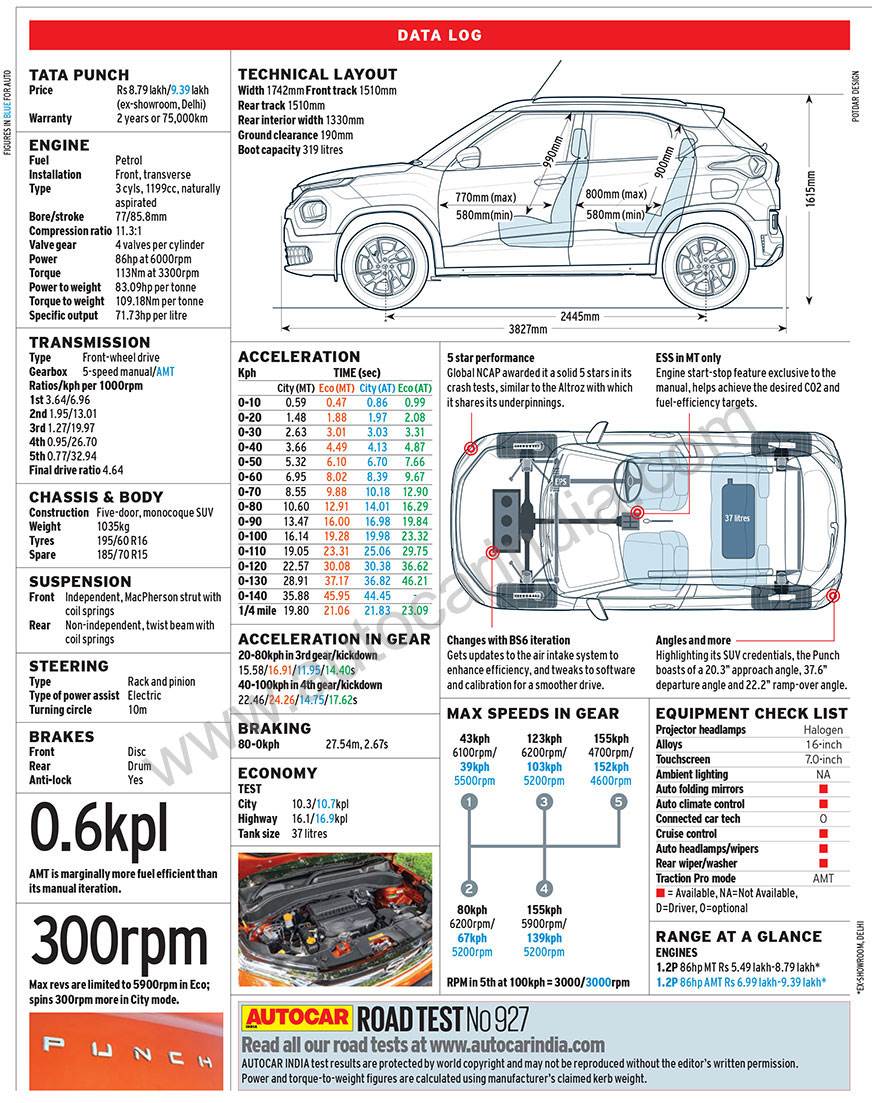
from Autocar India - All Car Reviews https://ift.tt/3x3ZQg6
https://ift.tt/30EaldZ



